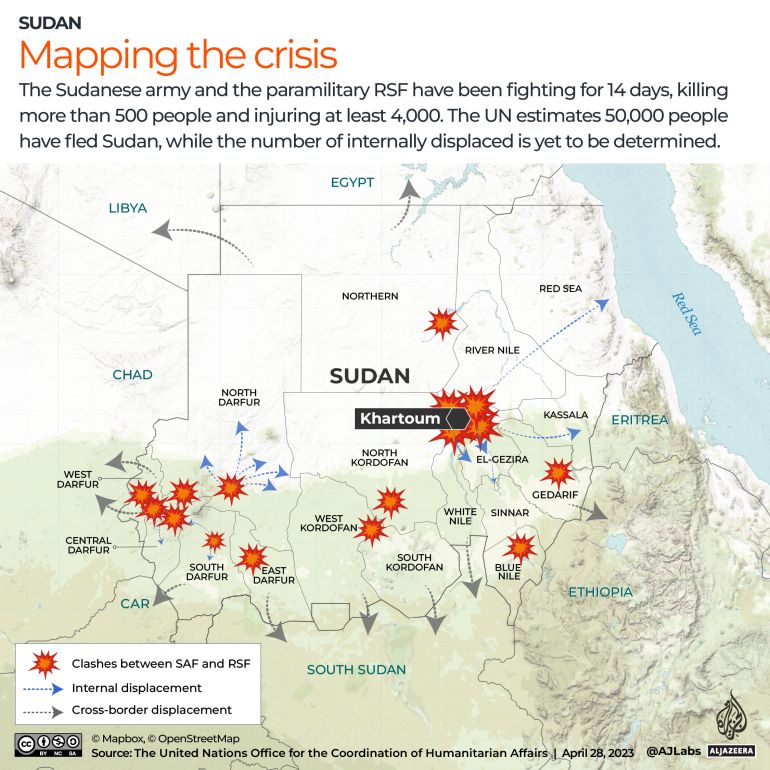Hentet fra Al Jazeera May 1stt 2023.
The power vacuum in western Darfur state risks drawing in fighters and weapons from Libya, CAR and Chad, analysts say.
As the conflict intensifies in Sudan, experts caution that the power vacuum in Darfur, its western province, may attract fighters and weapons from neighbouring countries, including Libya, the Central African Republic (CAR), and Chad.
The region’s security has been compromised due to an ongoing power struggle between the Sudanese army and the Rapid Support Forces (RSF), a paramilitary group led by Mohamad Hamdan “Hemedti” Dagalo, a tribal leader from the Mahariya clan of Darfur’s Rizeigat tribe.
But Hemedti is not the only tribal leader who has weight in Darfur. His rival, Musa Hilal of the Mahamid clan of Rizeigat, was the original leader of the feared Arab tribal militias backed by the government, known as the Janjaweed, that spearheaded state-backed mass killings against mostly non-Arab communities who were revolting against the centre.
So armed groups from Sudan’s western frontier could go either way, support or undercut Hemedti, to preserve the lucrative smuggling routes, settle scores with rival groups or come to the aid of their kin in Darfur.
Like the 128th brigade, a mercenary group fighting for the LNA, which comprises many Sudanese Mahamid fighters who have profited from war and smuggling in Libyan cities such as Sirte, Sebha and Orabi for years.
Since Haftar’s failed bid to capture Libya’s capital Tripoli in 2019, the 128th brigade has enriched itself through the illicit trafficking of commodities like drugs and fuel.
